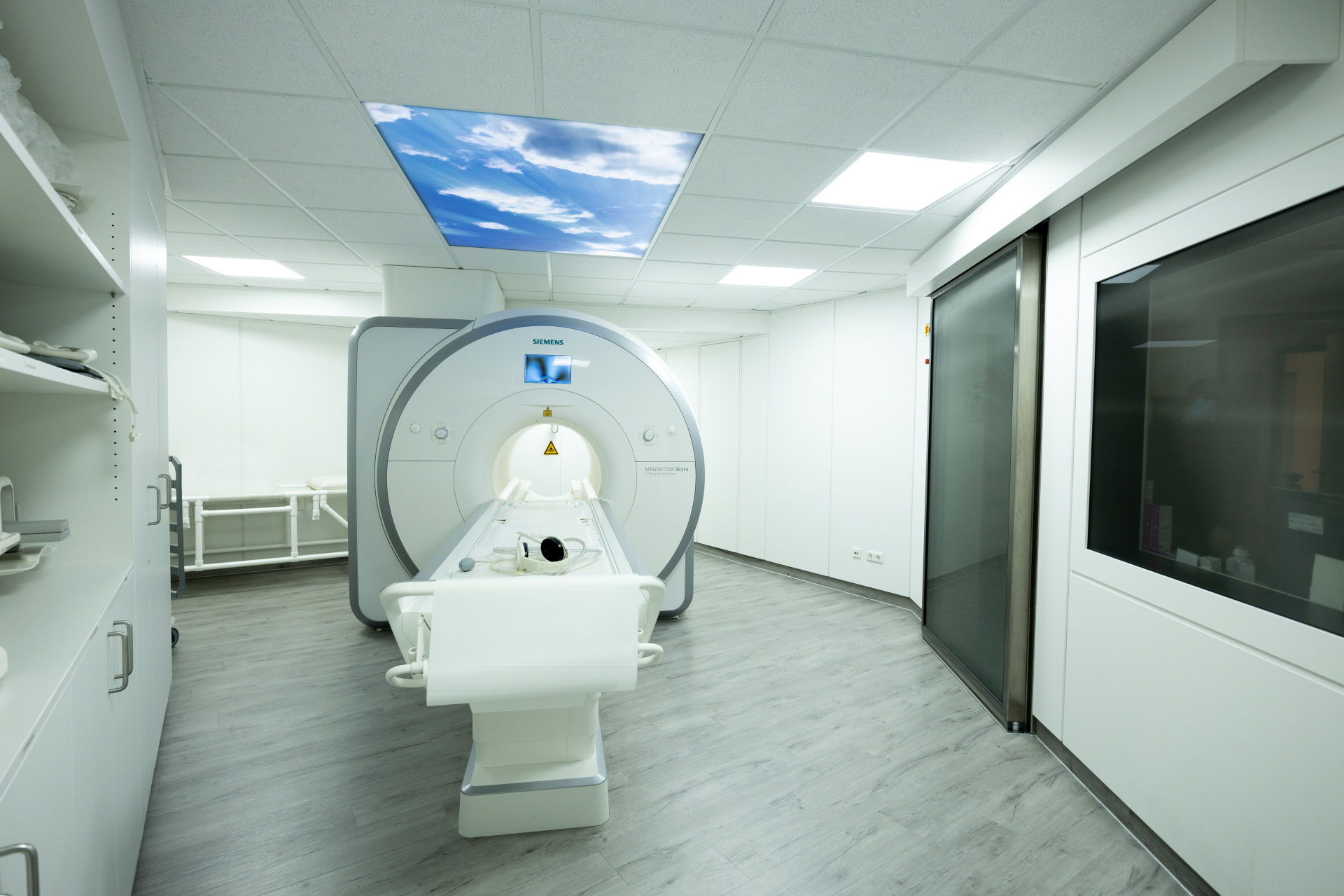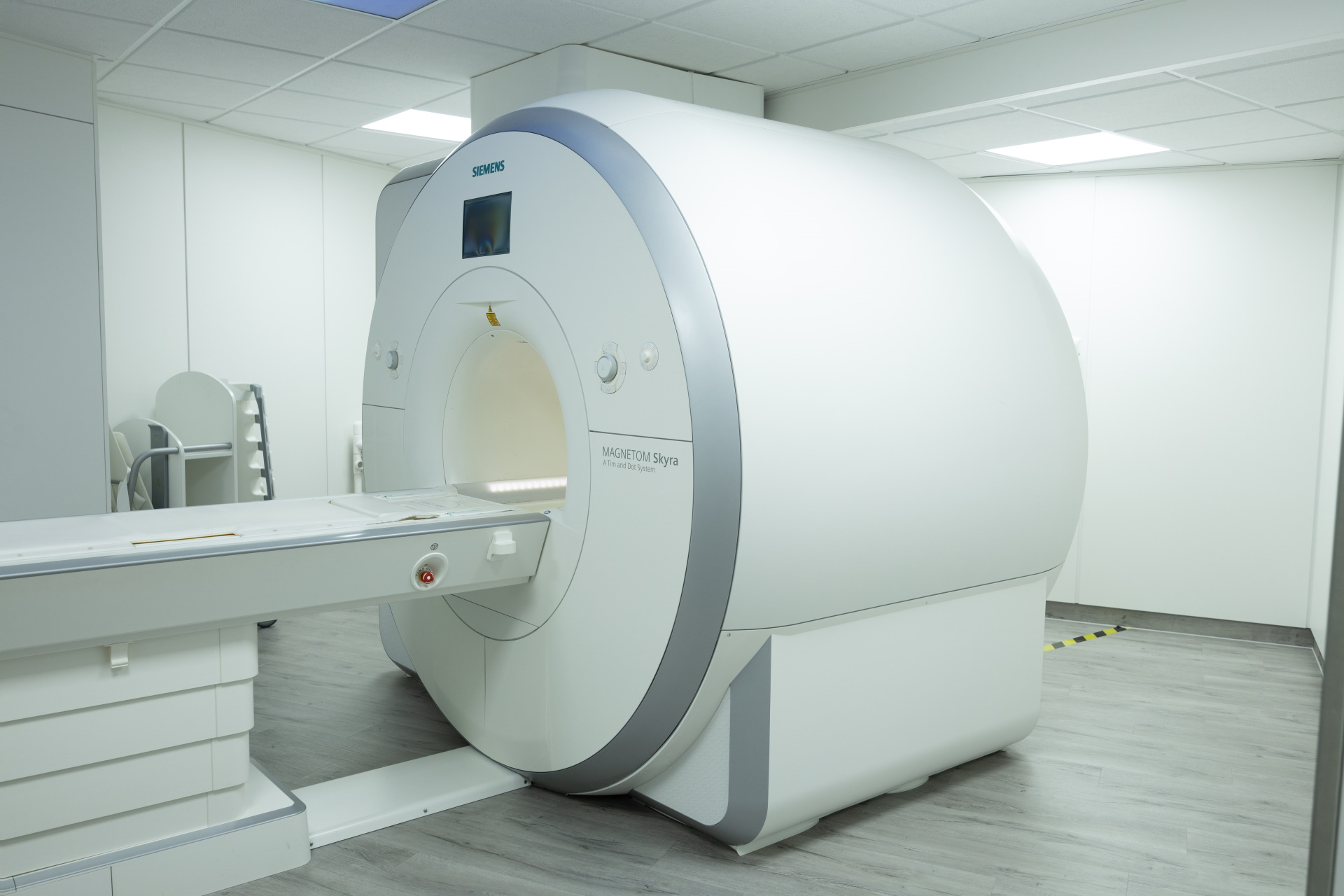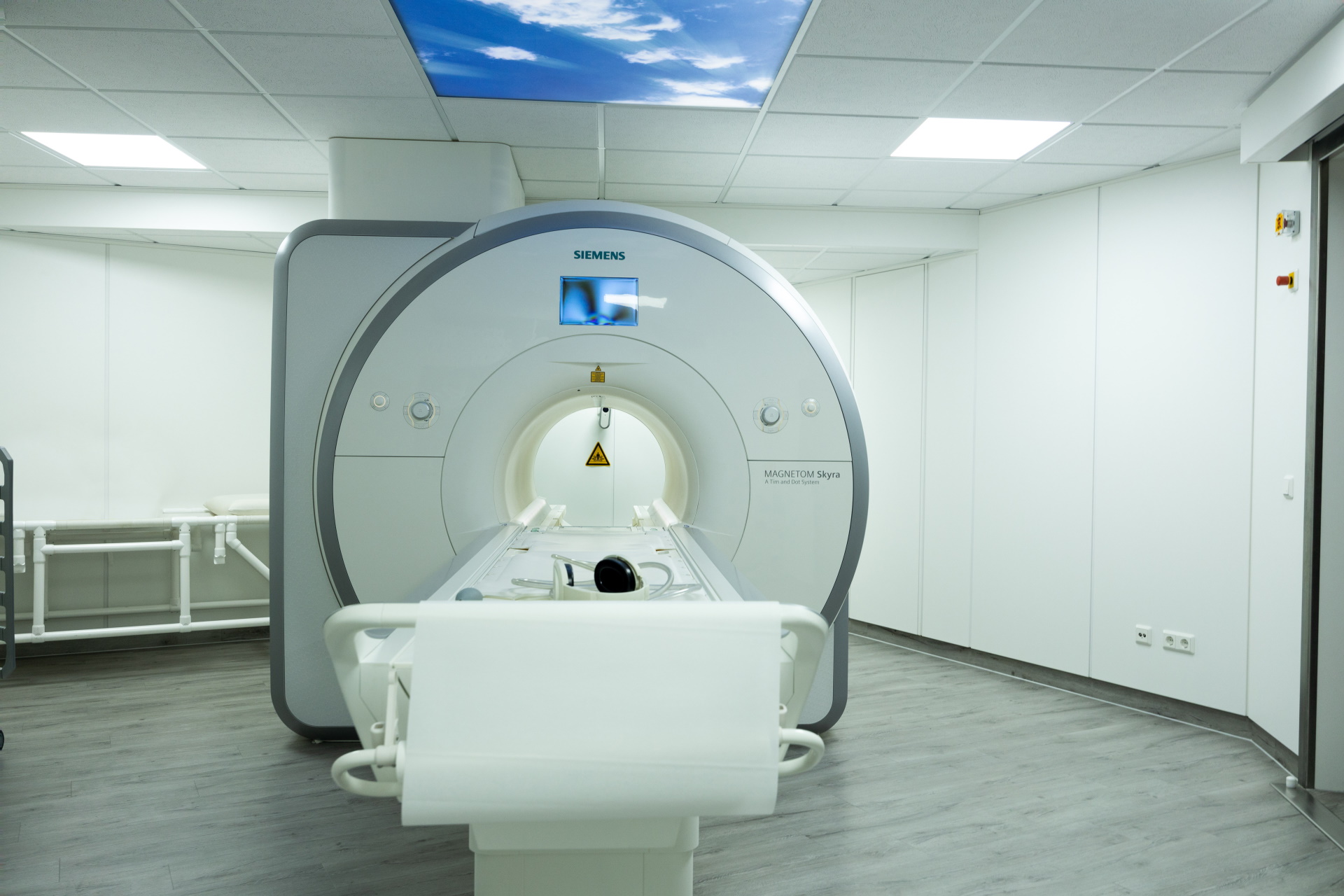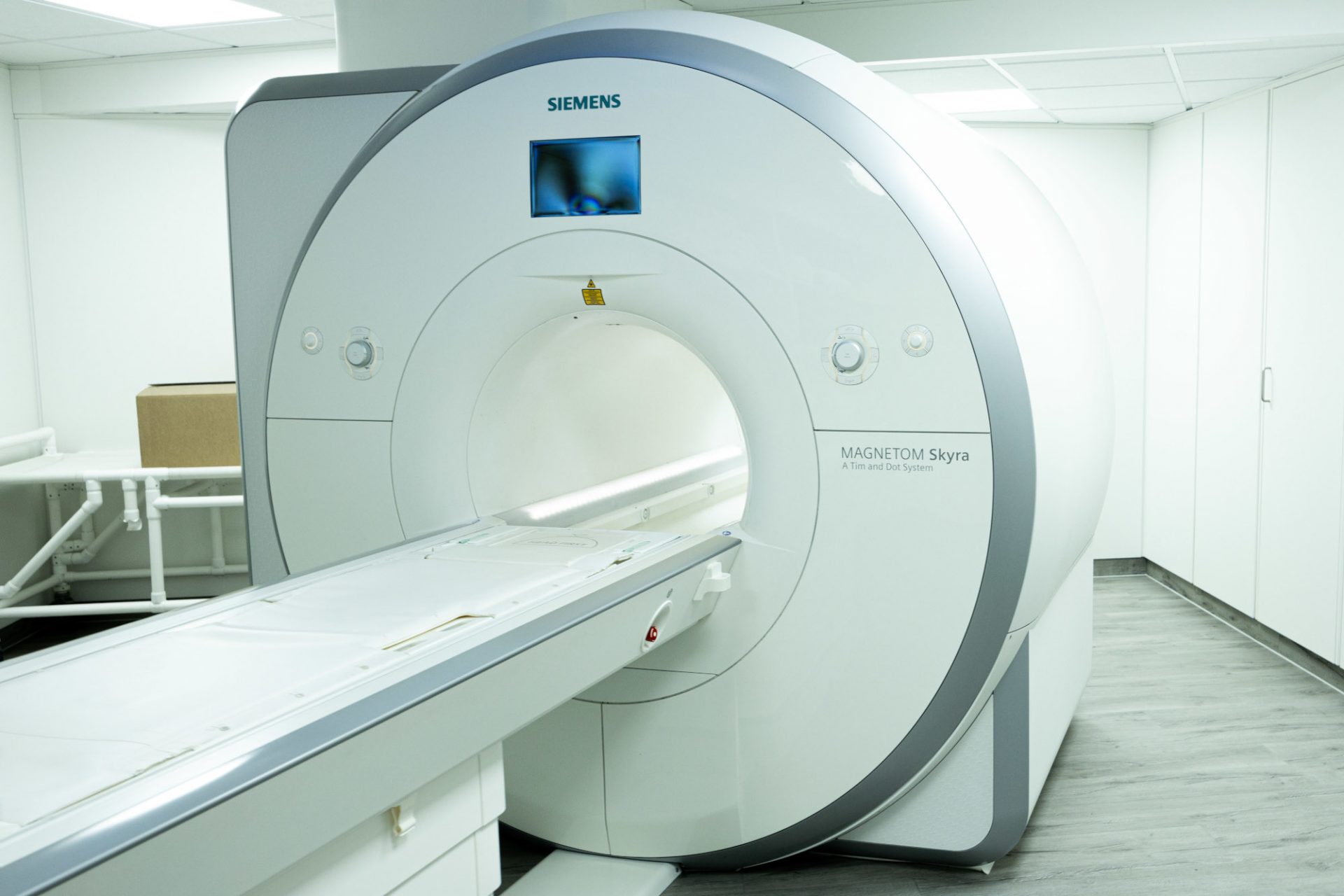MRI examination
Detailed diagnostics without X-rays
A magnetic resonance imaging (MRI) scan is a non-invasive procedure that produces three-dimensional imagery of the inside of your body. Allowing us to diagnose pathological changes in your body, the procedure is painless and radiation-free for utmost comfort and protection.
This low-risk procedure uses magnetic fields and radio waves and is particularly well suited for imaging soft tissue. Accurate clarification and precise localization of pathological changes enable you to start appropriate therapy earlier and increase chances of a complete recovery.
MRI can be used in many areas, such as cancer and musculoskeletal system diagnostics, internal questions or brain examination. Detailed information on the examinations we offer can be found here.
Duration of examination
Approx. 10 – 15 minutes (without contrast agent)
Areas of application
Oncology, neurology, orthopedics, urology and more
Health insurence benefit
Yes, with bank transfer
Due to the strong magnetic field, all jewelry and other metal objects, such as clothing containing metal (e.g., buttons) or belts, must be removed before the examination. If necessary, please make sure that clothing and shoes can be taken off and put back on easily.
Please inform us if you have implants, a pacemaker, prostheses, an insulin pump or metal parts (e.g. shrapnel, piercings, but also tattoos) in your body for individual clarification on whether the MRI can be performed. Please also inform us if you have a known allergy to contrast media.
Further information regarding preparations and the procedure will be provided by our specialist staff in advance of your examination.
An MRI is usually covered by all health insurance companies after appropriate indication and referral by your physician.
Among other things, the human body consists of hydrogen atoms which MRI changes in order to measure their positions. A strong magnetic field in the MRI machine directs the disordered atoms in your body in a certain direction and then redirects them using radio waves.
If the radio waves are switched off again, the atoms jump back to the position specified by the magnet. In the process, the atoms send out signals that sensors in the MRI can measure. The device uses these signals to calculate three-dimensional cross-sectional images of your body.



